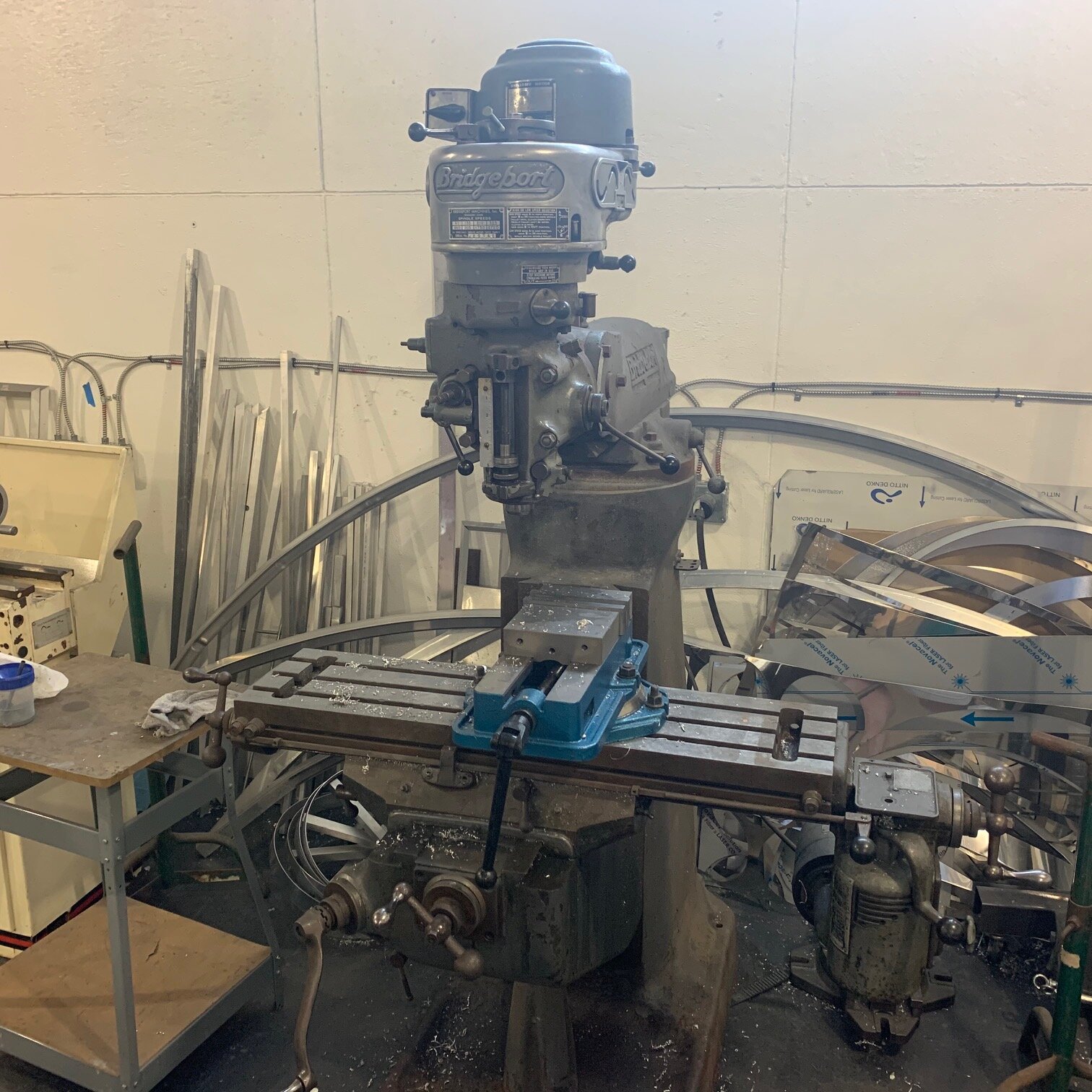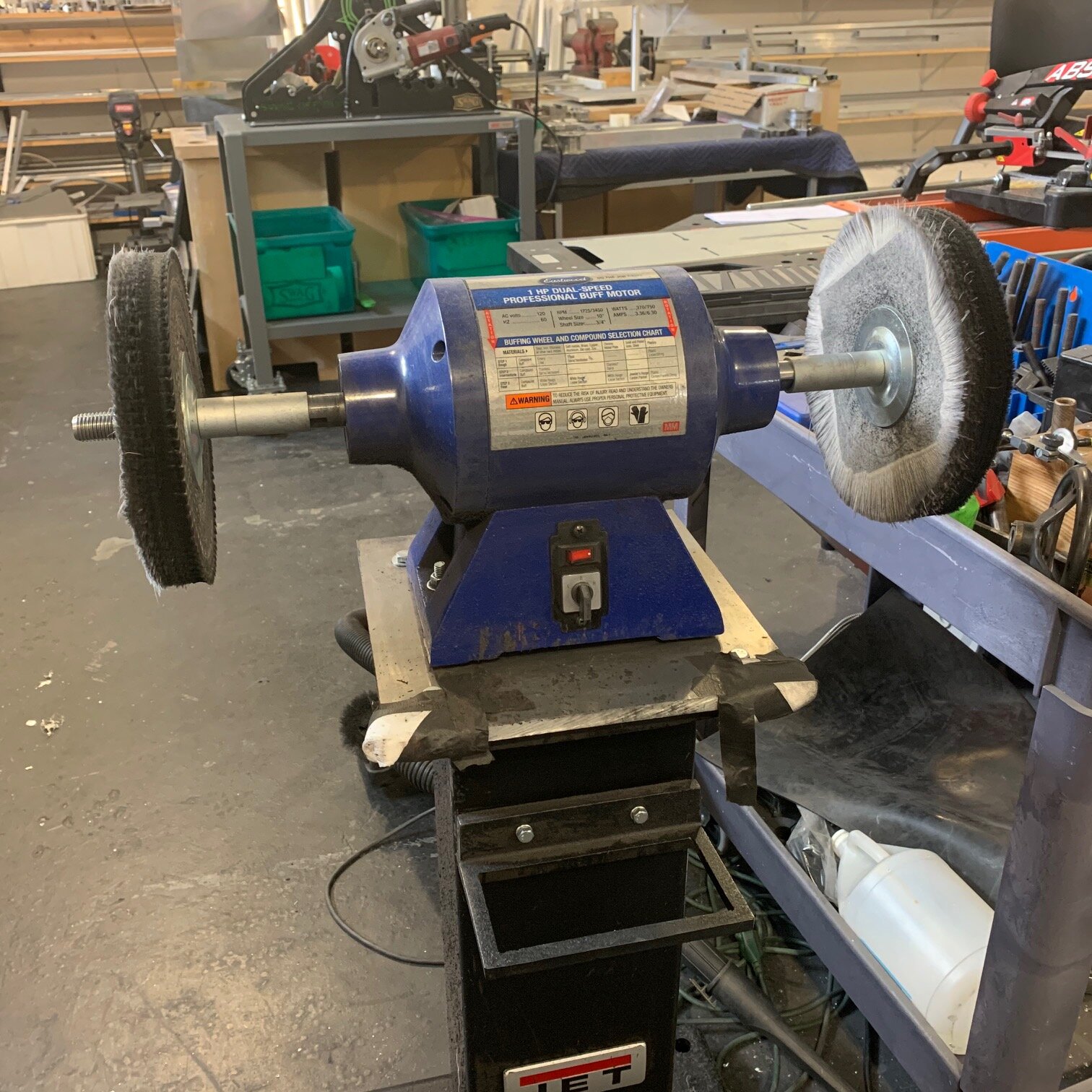Traditional Tools
While modern technology has an impact on many of the things we do in the studio, most of our metalworking tools and techniques are quite traditional, mostly unchanged for the past 50-100 years. This may be the single most fascinatingly part of the last 5-6 years of work, how the modern and the traditional mingle and work together.
Bridgeport Mill
The Grand Dame of American machine tools, the Bridgeport Machine Tool Company of Connecticut released the first mill in 1938. For all practical purposes the design hasn’t fundamentally changed since then. The term “Bridgeport” is applied to any upright milling machine regardless of manufacturer. My version was left the factory in 1956.
Metal Lathe
If a Mill makes square things more square, the Lathe is designed to make round things more round. The lathe is the hardest machine in the studio to learn and the most dangerous. But any piece of metal in any sculpture that’s round has been through at least one and probably three or four different processes in the lathe. This one dates from the 1960s.
Pedestal Buffer
While the motor might be new, the concept behind what this tool does is as old as time itself. A rough surface, combined with a wax-based compound, when rubbed on a metal surface removed oxidation and results in a shine. Except now the fabric is a woven wheel that turns at 3750 RPM, the compounds are scientifically engineered and the metal has been extensively prepared before polishing.
Sheet Brake and Slip Roll
Sheet metal factors heavily in the sculpture I make and these two tools are essential to sheet metal work. The red Sheet Metal Brake in front is used to bend metal in sharp creases. Behind it is the Slip Roll, which uses long metal rollers to slowly squeeze strips of sheet metal into perfect circles.
Tube Bender
In the same way the Slip Roll use three long round rollers to slowly shape sheet metal into curves and circles, the tube bender use three heavy dies to slowly force straight square, round and rectangular tubes into gentle curves seen in the Arcs series to full circles seen in The Trio. For years we used a hand crank and spent hours bending tube. This year we hacked the tool and added the red attachment (a pipe threading tool) which helps automate the process.
Band Saw
Most of our work is with aluminum extrusions which are delivered to the studio in up to 24 foot lengths. Virtually every single piece of metal in every sculpture comes in contact with the band saw. This one is an Italian design that is small, accurate and perfect for the thin aluminum we use so much of.






